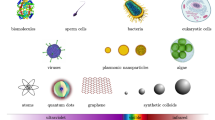Abstract
Some unexplored decoherence aspects within the Caldeira–Leggett master equation are analyzed and discussed. The decoherence process is controlled by the two environment parameters, the relaxation rate or friction and the temperature, leading to a gradual transition from the quantum to classical regime. Arrival time distributions, non-minimum-uncertainty-product or stretching Gaussian wave packets, identical particles and diffraction in time display interesting features during the decoherence process undergone by the time dependent interference patterns. We show that the presence of a constant force field does not affect the decoherence, positive values of the stretching parameter reduce the rate of decoherence, the symmetry of the wave function for identical particles is not robust enough in the gradual decoherence process because indistinguishability is lost, and diffraction in time and space is gradually washed out by increasing the temperature and/or relaxation rate in the zero dissipation limit within the so-called quantum shutter problem.










Similar content being viewed by others
References
H.D. Zeh, Found. Phys. 1, 69 (1970)
W. H. Zurek, Phys. Rev. D 24, 1516 (1981); 26, 1862 (1982)
E. Joos, H.D. Zeh, Z. Phys. B Condens Matter 59, 223 (1985)
A.O. Caldeira, A.J. Leggett, Phys. A 121, 587 (1983)
A.O. Caldeira, An introduction to macroscopic quantum phenomena and quantum dissipation (Cambridge University Press, Cambridge, 2014)
M. Schlosshauer, Decoherence (Springer, Heidelberg, 2007)
S.V. Mousavi and S. Miret-Artés, Ann. Phys. 393, 76 (2018); J. Phys. Commun. 2, 035029 (2018); Eur. Phys. J. Plus, 134, 311 (2019); 134, 431 (2019)
S.V. Mousavi, S. Miret-Artés, Eur. Phys. J. Plus 135, 83 (2020)
S.V. Mousavi, S. Miret-Artés, Entropy 23, 1469 (2021)
M. Moshinsky, Phys. Rev. 88, 625 (1952)
J.G. Muga, C.R. Leavens, Phys. Rep. 338, 353 (2000)
P.R. Holland, The Quantum Theory of Motion (Cambridge University Press, Cambridge, 1993)
D. Dürr, S. Goldstein, N. Zanghi, J. Stat. Phys. 68, 259 (1992)
J.G. Muga, R. Sala, J.P. Palao, Superlattices Microstruct. 23, 833 (1998). (and references therein)
C.R. Leavens, Bohm trajectory approach to timing electrons. Lect. Notes Phys. 734, 129 (2008)
A. Venugopalan, Phys. Rev. A 50, 2742 (1994)
A. Venugopalan, D. Kumar, R. Ghosh, Phys. A 220, 563 (1995)
J.M. Yearsley, Phys. Rev. A 82, 012116 (2010)
S.V. Mousavi, S. Miret-Artés, Eur. Phys. J. Plus 135, 324 (2020)
H.-P. Bauer, F. Petruccione, The theory of open quantum systems (Oxford University Press, Oxford, 2002)
G.W. Ford, R.F. O’Connell, Phys. Lett. A 286, 87 (2001)
W.H. Zurek, Phys. Today 44(10), 36 (1991)
T. Qureshi, A. Venugopalan, Int. J. Mod. Phys. B 22, 981 (2008)
A. del Campo, G. García-Calderónan, J.G. Muga, Phys. Rep. 476, 1 (2009)
Acknowledgements
SVM acknowledges support from the University of Qom and SMA from Fundación Humanismo y Ciencia.
Author information
Authors and Affiliations
Corresponding author
Appendix A: continuity equation for the single-particle density
Appendix A: continuity equation for the single-particle density
Taking time derivative of both sides of Eq. (48) yields
Now using the continuity Eq. (6) and imposing appropriate boundary condition yielding zero boundary terms we obtain the following continuity equation,
where
and \( J_{kl}(x, t) \) given by diagonal elements of (5) satisfies Eq. (6) with \( P_{kl}(x, t) \).
Rights and permissions
About this article
Cite this article
Mousavi, S.V., Miret-Artés, S. On some unexplored decoherence aspects in the Caldeira–Leggett formalism: arrival time distributions, identical particles and diffraction in time. Eur. Phys. J. Plus 137, 140 (2022). https://doi.org/10.1140/epjp/s13360-022-02367-6
Received:
Accepted:
Published:
DOI: https://doi.org/10.1140/epjp/s13360-022-02367-6




